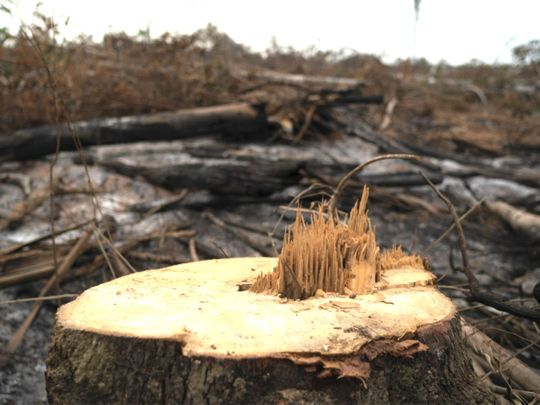
The most wonderful sound one can wake up to is the chirping of birds. But those joyous notes are being silenced by human beings who fell trees indiscriminately without a thought for the consequences. Many of these trees are nesting places for birds. We are witnessing the disappearance of common species such as the sparrow. This bird is now a rare sight and efforts are being made to woo them back to our gardens.
When we were growing up, we had a profusion of trees in our yard, which provided shade, fruit and flowers. We were lucky enough to see so many different kinds of birds and became familiar with their nesting habits and the intricate homes they built using material sourced from their surroundings.
We marvelled at the weaver bird’s nest and beautifully coloured eggs we came across during our nature rambles in the garden. Even as children we knew we could only look but not touch. And now I read about the bird population in the city where I live dipping by 80 per cent over the past decade.
In June, the pre-monsoon showers brought down hundreds of trees in areas across the city, blocking roads and snapping cables. These were not young trees but yet these mighty giants were brought down due to a combination of factors. In many areas, concrete was poured on the soil surrounding these plants, preventing the absorption of water. Unplanned civic works also compound the problem as the places that are dug up for construction of drains are more often than not left disturbed.
Faint ray of hope
In the midst of this public apathy to the plight of trees there is a faint ray of hope. A Hyderabad-based environmentalist has fought relentlessly and brought together over 35,000 citizens, land owners and village administration units to fight against the felling of 960 ancient banyan trees (many of them over 800 years old) and another 150 rain trees, which were to go under the axe for a road widening project on the Hyderabad-Chevella-Bijapur highway.
After an online signature campaign to save these precious trees, the authorities have given time for these to be relocated. Hyderabadis have come forward to support and take care of these trees till they take root again.
Having lived in Dubai, I have seen palm trees being relocated during road widening projects and have been impressed by the care taken to give them a safe new home.
Banyan trees hold a special place in my heart. In the various army cantonments where I grew up, these provided a magical play space, with the aerial roots helping our imaginations to soar as we swung on them and imitated fictional characters such as Tarzan. I have had the privilege of seeing the widest tree in the world in Kolkata, an old banyan tree which is about 250 years old.
Translocation
Sources at the National Highways Authority of India say that the road widening project is a necessity as there is a huge volume of traffic on this road but the tendering process has been stalled in light of environmental concerns.
It is heartening to note that there are people from all walks of life who care about issues like this and are willing to go the extra mile to make their collective voice heard.
Tree translocation is a tedious process and has to be done very carefully. The good news is that there is a company in Hyderabad that specialises in tree translocation and has translocated around 5,000 trees from different species.
As someone rightly said, “Reversing deforestation is complicated; planting a tree is simple.”
—Vanaja Rao is a freelance writer based in Hyderabad, India.











